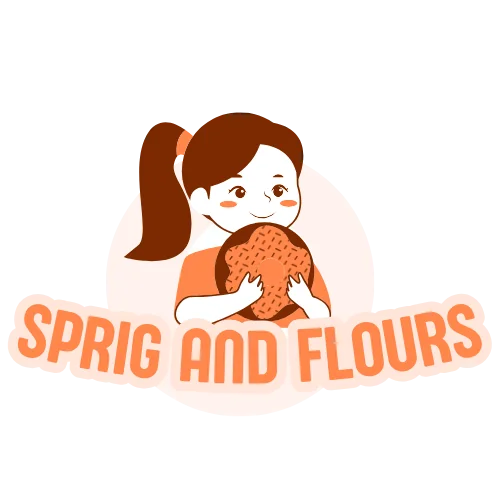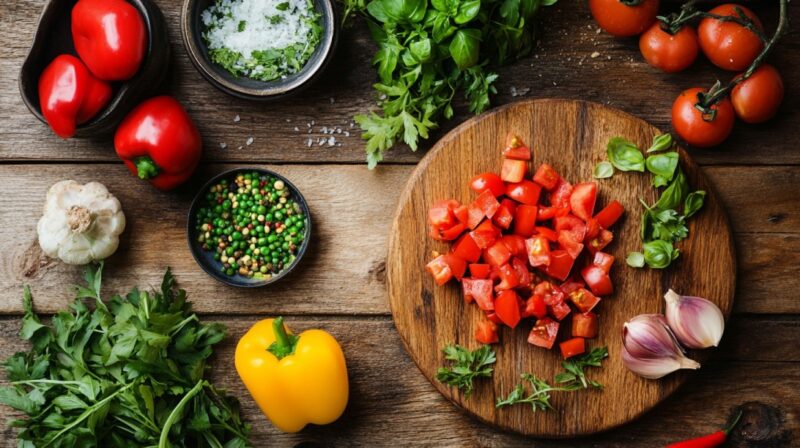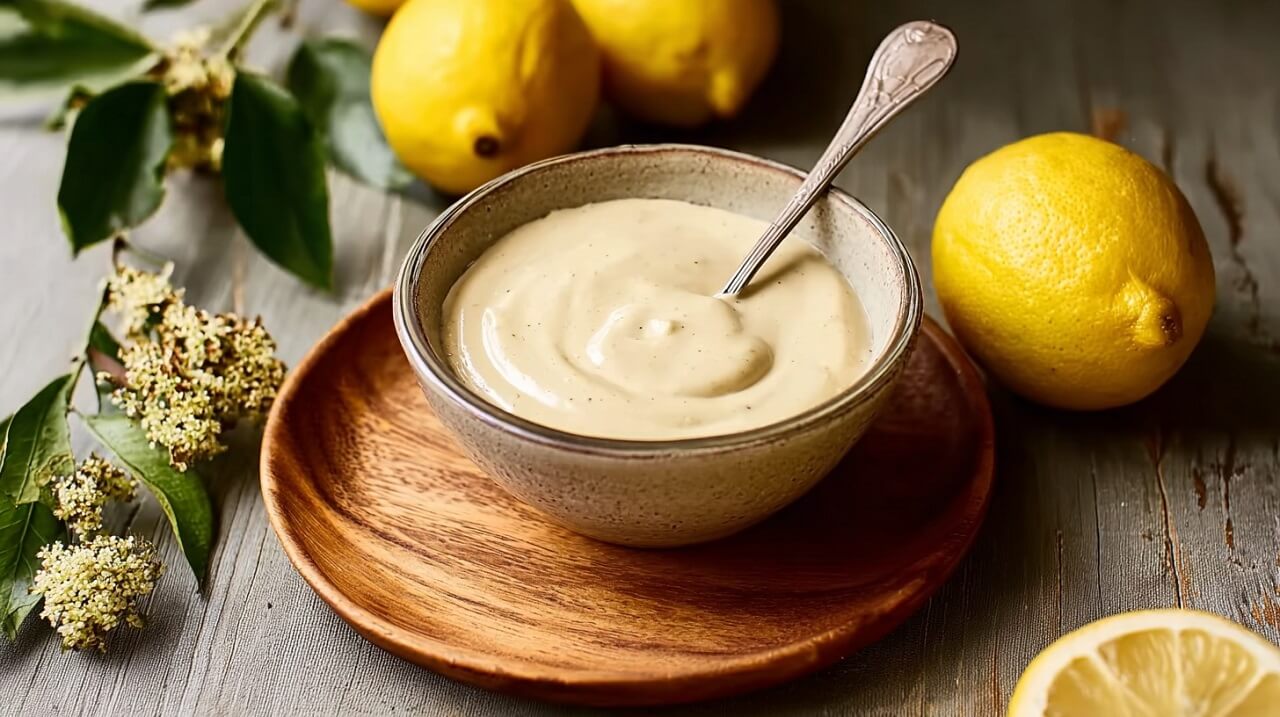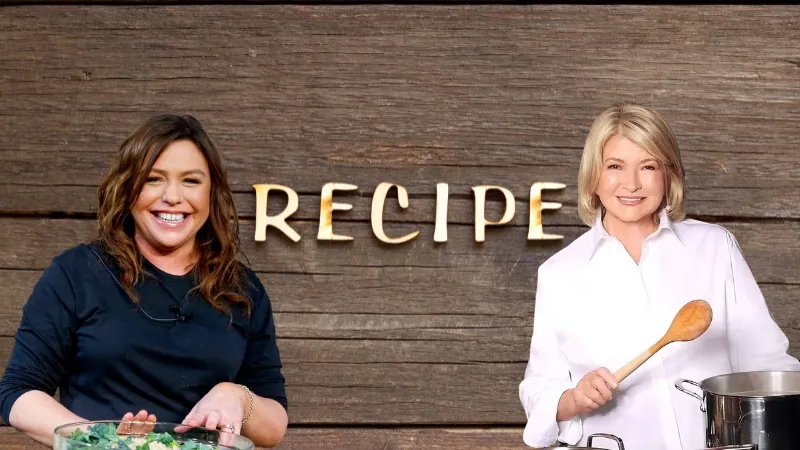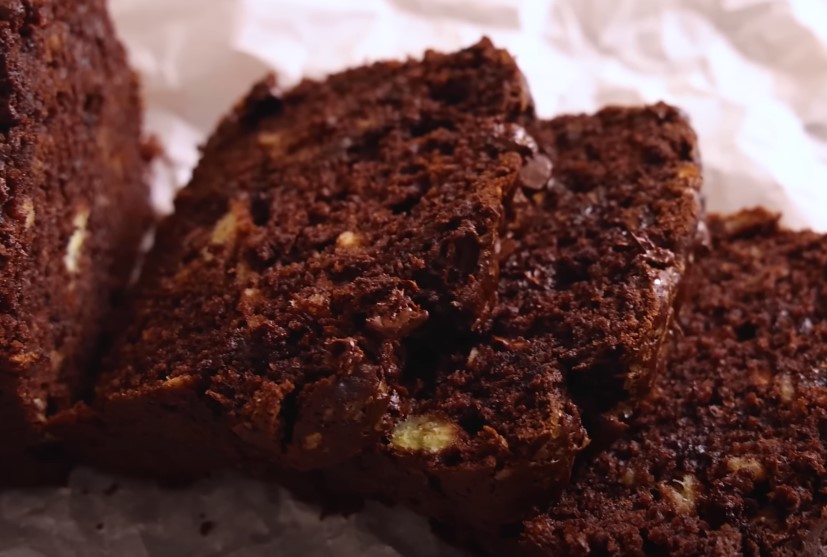Stress builds fast. Most people experience it at work, at home, or in moments when life seems to slip out of control. Comfort food recipes can help alleviate stress and bring back calm. They bring back structure through simple actions, such as stirring soup or baking dough. That is where I turn when days feel too hard to carry.
Food that calms the mind is not a myth. Science shows that certain warm, carbohydrate-rich meals can reduce cortisol levels. Researchers from the University of Michigan tracked stress patterns in adults. People who ate traditional dishes reported quicker emotional recovery. Cooking routines also showed signs of stabilizing mood.
Table of Contents
ToggleWhy Comfort Food Works on the Brain
Food taps into memory. When stress builds, the brain seeks cues associated with safety. Warm and cozy meals bring that sense back. Meals that evoke potent sensory triggers offer emotional comfort. They ground the body and distract the brain from overdrive.
A 2023 study from Harvard confirmed a key link. Participants who cooked meals they had grown up with showed lower anxiety after twenty minutes. The food itself held no chemical cure. The method of preparation offered the relief.
My First Go-To: Creamy Mashed Potatoes with Garlic Butter
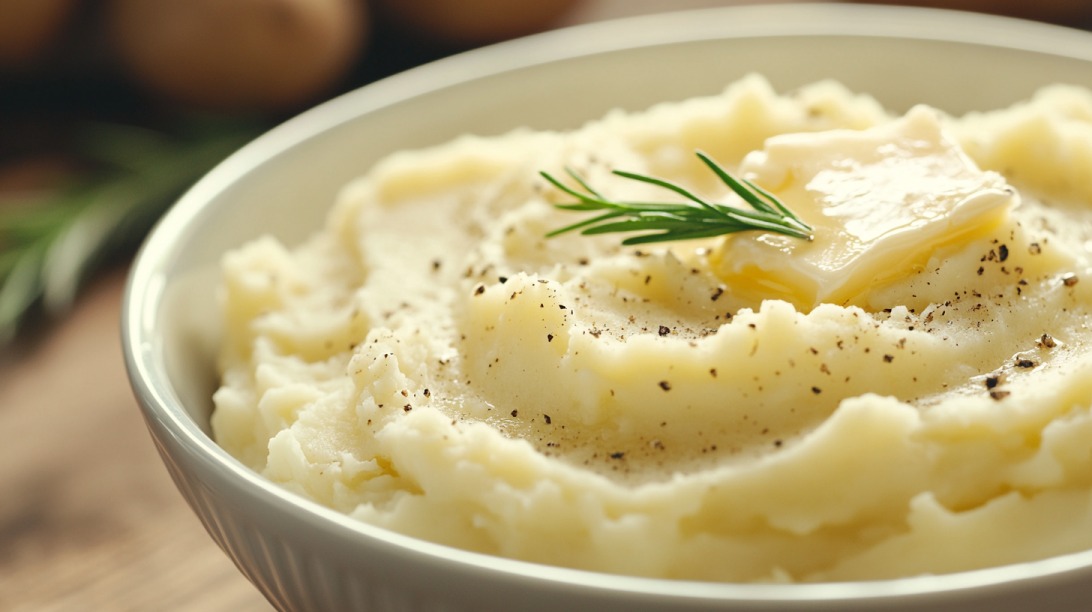
Every time I feel low, I make mashed potatoes. No other meal feels as soft or grounding. I boil russet potatoes in salted water until tender. I add milk and butter with roasted garlic. The spoon sinks in easily, and the flavor soothes more than any pill.
Garlic boosts dopamine release. That helps the body relax. Mashed potatoes also carry tryptophan, which plays a role in serotonin production. That combination acts as a stress buffer.
These Creamy Mashed Potatoes with Garlic Butter are the ultimate comfort food—rich, velvety, and packed with savory flavor.
Made with buttery Yukon Gold potatoes, roasted garlic, and a hint of cream, this side dish is a must-have for holiday dinners, weeknight meals, or any occasion when you crave something warm and satisfying. Perfectly fluffy with a luxurious texture, they pair beautifully with meats, gravies, and vegetables.
- 2 pounds Yukon Gold potatoes, peeled and cut into chunks
- 4 tablespoons unsalted butter, divided
- 4 cloves garlic, minced
- ½ cup whole milk (warm)
- ¼ cup heavy cream (warm)
- Salt, to taste
- Freshly ground black pepper, to taste
- Fresh chives or parsley, chopped (optional, for garnish)
Instructions:
- Bring a large pot of salted water to a boil. Add the potato chunks and cook for 15–20 minutes, or until tender when pierced with a fork.
- While the potatoes are cooking, melt two tablespoons of butter in a small skillet over medium-low heat. Add minced garlic and sauté for 1–2 minutes until fragrant but not browned. Set aside.
- Drain the cooked potatoes and return them to the pot. Let them sit for 2–3 minutes to allow excess moisture to evaporate.
- Mash the potatoes using a potato masher or a hand mixer until they are mostly smooth.
- Gradually stir in the warm milk and heavy cream, then add the garlic butter mixture. Continue mashing until the mixture is creamy and well combined.
- Stir in the remaining two tablespoons of butter, then season with salt and black pepper to taste.
- Transfer to a serving bowl, garnish with chopped herbs if desired, and serve hot.
| Recipe Details | |
|---|---|
| Preparation Time | 10 minutes |
| Cooking Time | 20 minutes |
| Total Time | 30 minutes |
| Serving Size | 4 servings |
| Yield | 1 bowl of mashed potatoes |
| Cuisine | American |
| Course | Side Dish |
| Nutrition Information (per serving) | |
| Calories | 280 |
| Fat | 16g |
| Carbohydrates | 30g |
| Protein | 4g |
- For extra creaminess, add more butter or a dollop of sour cream.
- Try roasting the garlic instead of sautéing for a sweeter, deeper flavor.
- Make it ahead and keep warm in a slow cooker for gatherings or holidays.
Soothing dinner recipes and nutrients:
| Recipe Name | Main Ingredients | Mood-Support Nutrients | Ideal Time To Eat |
| Garlic Butter Potatoes | Potatoes, milk, garlic, butter | Tryptophan, dopamine | Dinner |
| Oatmeal with Banana | Oats, banana, cinnamon, and honey | Magnesium, serotonin | Breakfast |
| Chicken Rice Soup | Chicken, broth, rice, parsley | Collagen, zinc | Midday |
| Baked Macaroni | Pasta, cheese, egg, butter | Carbs, calcium | Dinner |
| Steamed Rice with Egg | Rice, egg, sesame oil, soy | Protein, iron | Evening |
Easy Comfort Meals That Do Not Fail
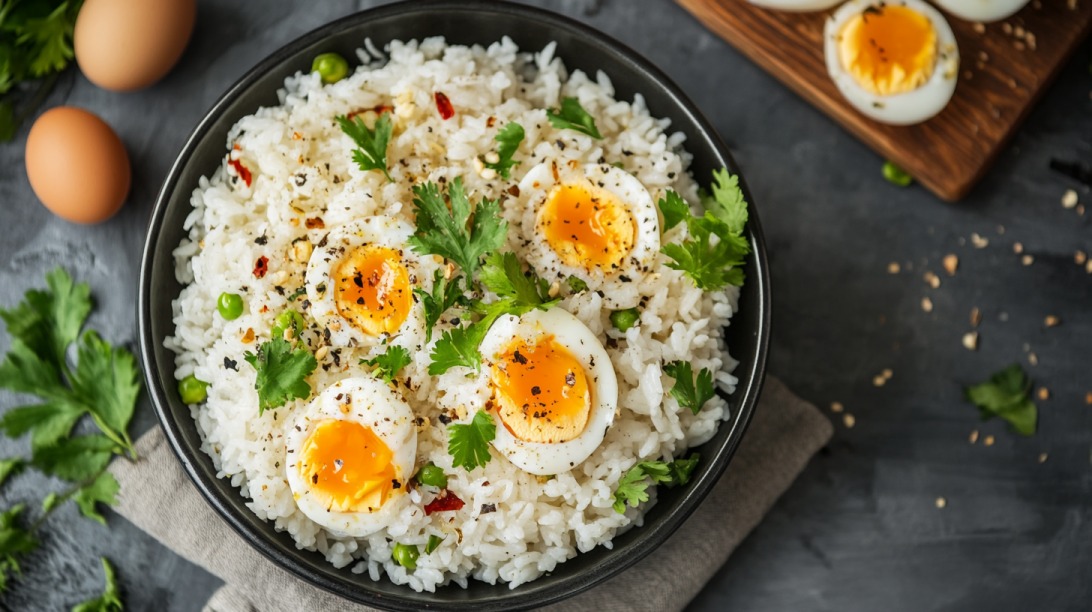
People often ask what to cook when feeling down, and I always return to a straightforward answer that never fails me. My answer starts with rice and ends with eggs, because those two ingredients give more relief than any snack or delivery.
Steamed jasmine rice holds heat and softness better than most grains, and when paired with a soft-cooked egg, a drizzle of sesame oil, and just a touch of soy sauce, it becomes more than a meal—it becomes a reset. The whole process takes less than ten minutes, making it a perfect solution when the mind feels cluttered and the stomach feels uneasy.
I have learned that the value in meals like this lies not just in the taste but in their predictability. Repetition calms the nervous system, and familiar actions, such as rinsing rice or cracking eggs, reduce decision fatigue. Many Japanese comfort meals follow this structure because they prioritize ease, balance, and warmth.
Soft textures also help the stomach relax, which is essential when stress slows or causes discomfort during the digestive process. When the body accepts food without resistance, the mind also begins to settle.
A 2024 study from Kyoto University found that soft rice meals paired with protein stimulate the vagus nerve, which supports a lower heart rate and steadier breathing.
That is why I do not skip this ritual. I follow one rule on difficult days—if the meal requires more than two steps or takes more than fifteen minutes, I don’t make it. That guideline has saved many evenings when emotional weight made decision-making feel too hard.
Cooking as Self-Care: The Act, Not Just the Dish
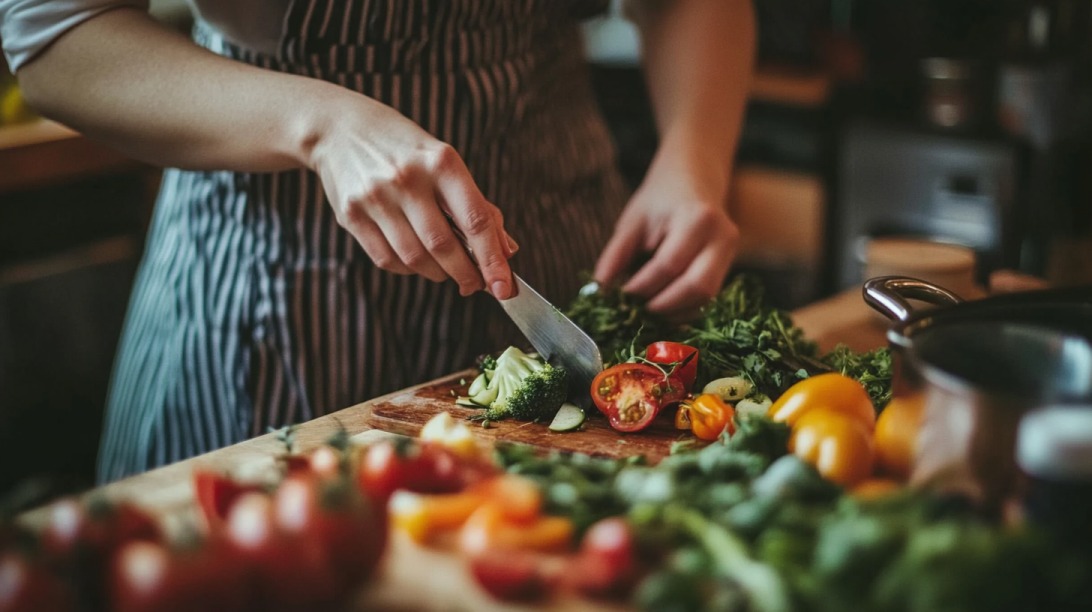
There are days when I feel too tired to explain my thoughts or too wound up to sit still, and on those days, I begin with vegetables. Chopping carrots or peeling onions forces me to slow down, and each motion reminds me that I can still act with care even when my head feels full.
Cooking as self-care does not rely on the finished dish, but on the structure it provides in the midst of chaos. It offers small steps with clear outcomes, and that steadiness helps restore a sense of inner rhythm.
Each part of the process brings the body back into focus. Pouring water into a pot, slicing garlic, or waiting for a sizzle might seem basic, but in those small choices, I find control again. Unlike scrolling through a screen or lying still in bed, cooking creates active rest. The work pulls me into the moment. That makes space for clarity to return.
The warmth of a stove, the weight of a knife, the scent of garlic in oil—all of that helps ground the nervous system. Sensory signals, such as scent and texture, trigger brain pathways that reduce panic and ease tension.
A 2022 study from the Karolinska Institute found that kitchen aromas, such as garlic and cinnamon, reduced stress hormone levels by up to 30 percent. That kind of power does not come from passive distractions—it comes from participation.
Each dish may change, but the rhythm stays the same. I clean the counter. I boil the water. I let the scent of food rise through the house. And by the time I sit down to eat, my body feels more ready to receive comfort.
Nourishing Meals for Hard Days
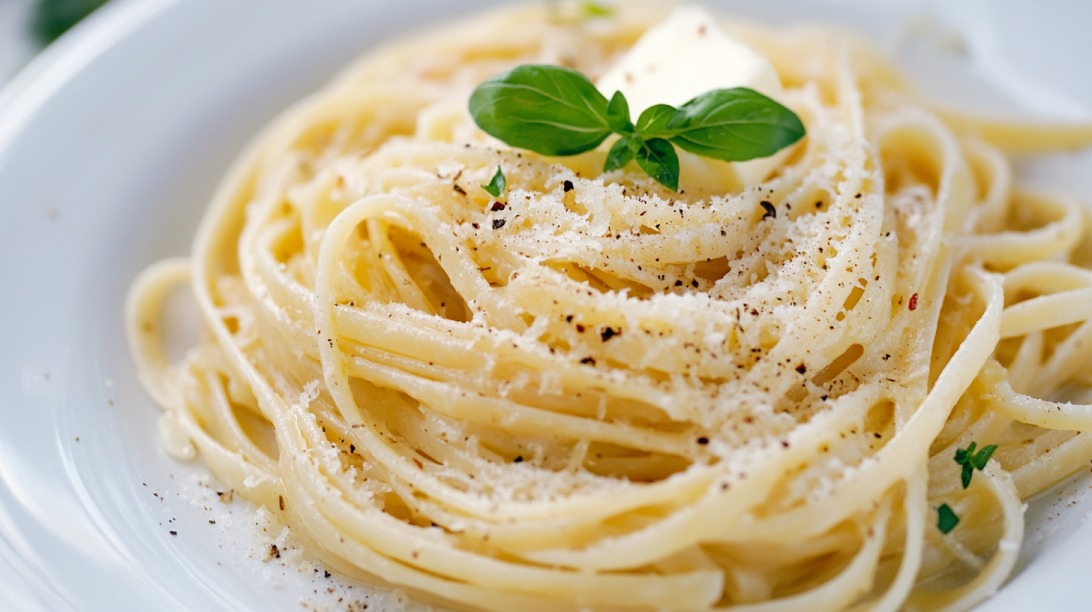
I keep three meals on rotation for the weeks when everything feels too loud or too heavy. I use one pot, a simple grain or legume, and no more than two vegetables. On those days, I do not look for complexity. I look for kindness in a bowl. Lentils with carrots, rice with parsley, or pasta with butter and garlic—all three work because they meet the body where it stands.
Each recipe begins with heat and ends with quiet. Olive oil in the pan, broth stirred in slowly, and time allowed to pass without pressure. I do not rush. I wait until the lentils bloom or the pasta swells. That waiting helps me breathe.
The science behind this matters too. Whole grains and legumes contain fiber that supports the gut lining, and that lining affects how stress hormones move through the body. Meals like this help reset the digestive system, and that shift affects energy, sleep, and even thought clarity. When the gut feels strong, the rest of the body follows.
Sometimes I add soft protein, such as an egg or shredded chicken, not for flavor but for structure. Protein helps restore blood sugar balance, which is especially important on days when emotional swings leave the body feeling drained. If the meal holds warmth, texture, and slow-cooked calm, then it meets the goal.
Hard days require food that does not push back. The meals I return to carry weight, but they never demand more than I can give. That is the test. If the first spoonful lets me exhale, then I know I made the right choice.
Nutrients that support mood stability:
| Nutrient | Role in Stress Reduction | Common Food Sources |
| Magnesium | Reduces muscle tension | Oats, spinach, almonds |
| Zinc | Balances cortisol production | Chicken, lentils, eggs |
| Vitamin B6 | Boosts serotonin | Banana, potato, rice |
| Omega-3 | Fights anxiety | Salmon, flax, walnuts |
| Tryptophan | Helps produce serotonin | Dairy, nuts, turkey |
Soothing Dinner Recipes That Build a Routine
I cook tomato rice on Fridays. It started as a habit and became a signal. One onion, two cloves of garlic, canned tomatoes, and white rice simmer for thirty minutes. I serve it with yogurt. My hands memorize the steps.
Cooking patterns bring relief—the more predictable the meal, the calmer the mind. Mental health experts say that routines build emotional structure.
What to Cook When Feeling Down: My Top 3 Picks
Lentil Soup
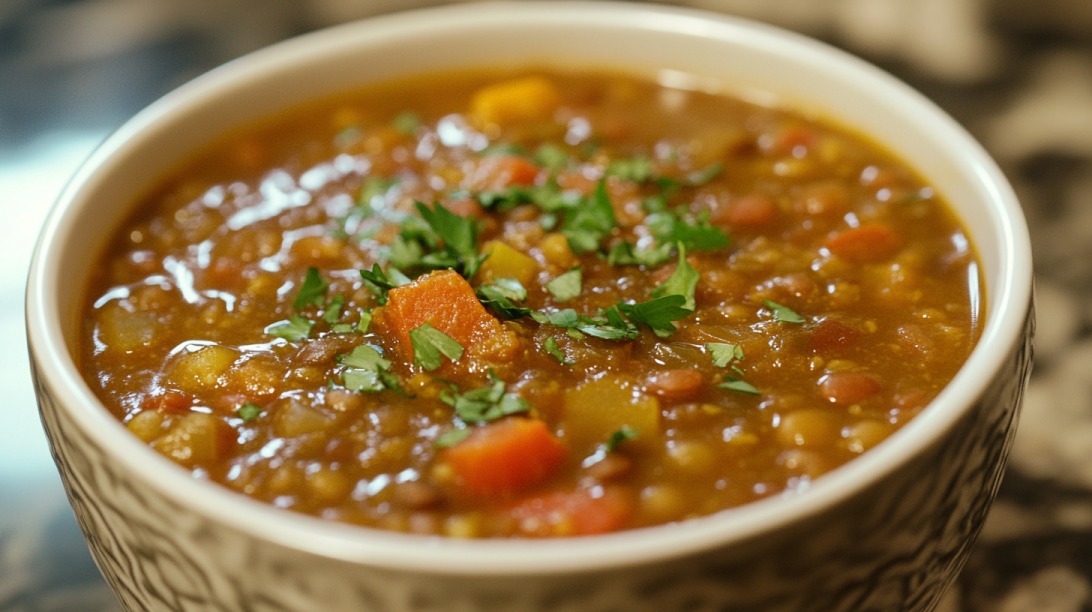
Hearty, nourishing, and full of flavor, this Lentil Soup is a comforting bowl of goodness perfect for chilly evenings or healthy meal prep.
Packed with protein-rich lentils, aromatic vegetables, and warming spices, it’s both satisfying and wholesome. Whether you’re vegan, vegetarian, or just looking for a cozy one-pot meal, this soup is easy to make, budget-friendly, and deeply satisfying.
- 2 tablespoons olive oil
- 1 medium onion, diced
- 2 carrots, peeled and diced
- 2 celery stalks, diced
- 3 garlic cloves, minced
- 1 teaspoon ground cumin
- ½ teaspoon smoked paprika
- 1½ cups dried green or brown lentils, rinsed
- 1 (14.5 oz) can diced tomatoes
- 6 cups vegetable broth
- 1 bay leaf
- Salt and pepper, to taste
- 2 cups chopped spinach or kale (optional)
- Juice of ½ lemon (optional, for brightness)
- Fresh parsley, chopped (for garnish)
Instructions:
- In a large pot, heat olive oil over medium heat. Add the diced onion, carrots, and celery. Sauté for about 5–7 minutes until the vegetables begin to soften.
- Stir in the garlic, cumin, and smoked paprika. Cook for an additional 1–2 minutes, until fragrant.
- Add the lentils, diced tomatoes (with juices), vegetable broth, and bay leaf. Bring the soup to a boil.
- Reduce the heat to low, cover partially, and simmer for 30–35 minutes, or until the lentils are tender.
- Remove the bay leaf. If desired, blend a portion of the soup with an immersion blender for a creamier texture.
- Stir in chopped spinach or kale and cook for an additional 5 minutes, until wilted.
- Add lemon juice if using, then taste and adjust seasoning with salt and pepper.
- Serve hot, garnished with fresh parsley.
| Lentil Soup Recipe Details | |
|---|---|
| Preparation Time | 10 minutes |
| Cooking Time | 35 minutes |
| Total Time | 45 minutes |
| Serving Size | 6 servings |
| Yield | 1 large pot of soup |
| Cuisine | Mediterranean / Middle Eastern |
| Course | Soup / Main Course |
| Nutrition Information (per serving) | |
| Calories | 240 |
| Fat | 6g |
| Carbohydrates | 35g |
| Protein | 13g |
| Fiber | 12g |
Additional Notes:
- Store leftovers in the fridge for up to 5 days or freeze for up to 3 months.
- Swap in red lentils for a quicker-cooking variation with a smoother texture.
- Add a pinch of red pepper flakes for a touch of heat.
Oats with Banana and Honey
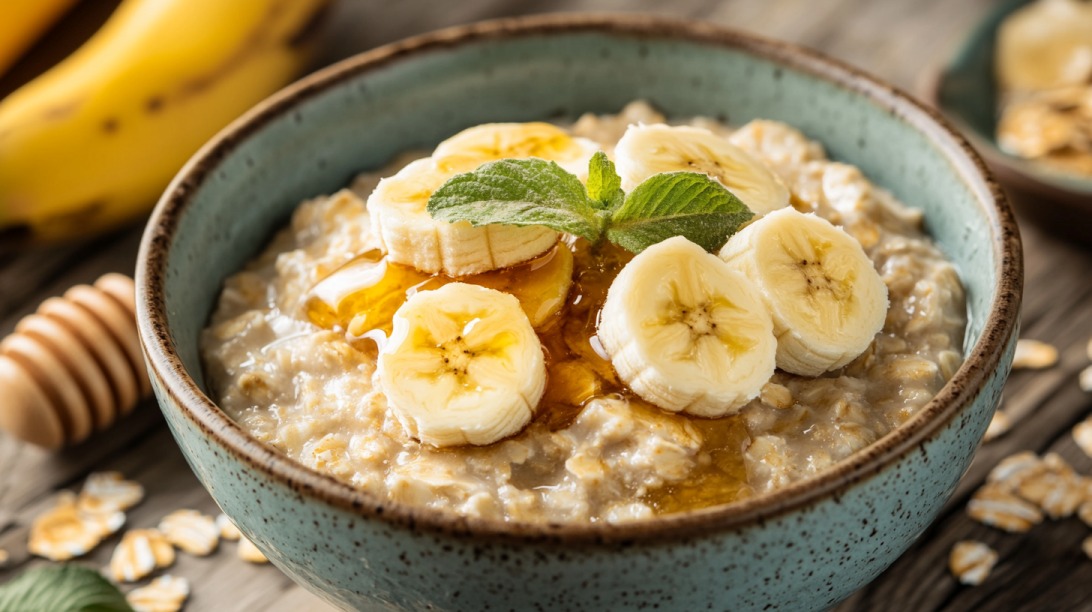
Start your morning right with this simple yet delicious bowl of Oats with Banana and Honey. It’s a warm, wholesome breakfast that’s naturally sweet, packed with fiber, and ready in minutes.
Creamy oats are topped with ripe banana slices and a drizzle of golden honey for the perfect balance of comfort and nutrition—ideal for busy mornings or a cozy weekend brunch.
- 1 cup rolled oats
- 2 cups water or milk (or a mix of both)
- Pinch of salt
- 1 ripe banana, sliced
- 1–2 teaspoons honey (to taste)
- ¼ teaspoon ground cinnamon (optional)
- 1 tablespoon chopped nuts or seeds (optional, for topping)
- A splash of milk (for serving, optional)
Instructions:
- In a medium saucepan, bring water or milk to a gentle boil with a pinch of salt.
- Stir in the oats and reduce the heat to low. Simmer for 5–7 minutes, stirring occasionally, until the oats are soft and have absorbed most of the liquid.
- Remove from the heat and let sit for a minute to thicken.
- Spoon the oats into a bowl. Top with banana slices, a drizzle of honey, and a sprinkle of cinnamon, if desired.
- Add chopped nuts or seeds for crunch and a splash of milk if desired.
- Serve warm and enjoy!
| Oats with Banana and Honey Recipe Details | |
|---|---|
| Preparation Time | 2 minutes |
| Cooking Time | 7 minutes |
| Total Time | 9 minutes |
| Serving Size | 1 serving |
| Yield | 1 bowl of oats |
| Cuisine | American |
| Course | Breakfast |
| Nutrition Information (per serving) | |
| Calories | 310 |
| Fat | 5g |
| Carbohydrates | 58g |
| Protein | 7g |
| Fiber | 6g |
- For extra creaminess, cook the oats in milk or add a spoonful of yogurt on top.
- Make it vegan by using plant-based milk and maple syrup instead of honey.
- Add chia seeds, flaxseeds, or a spoonful of peanut butter for added nutrition.
Egg Fried Rice
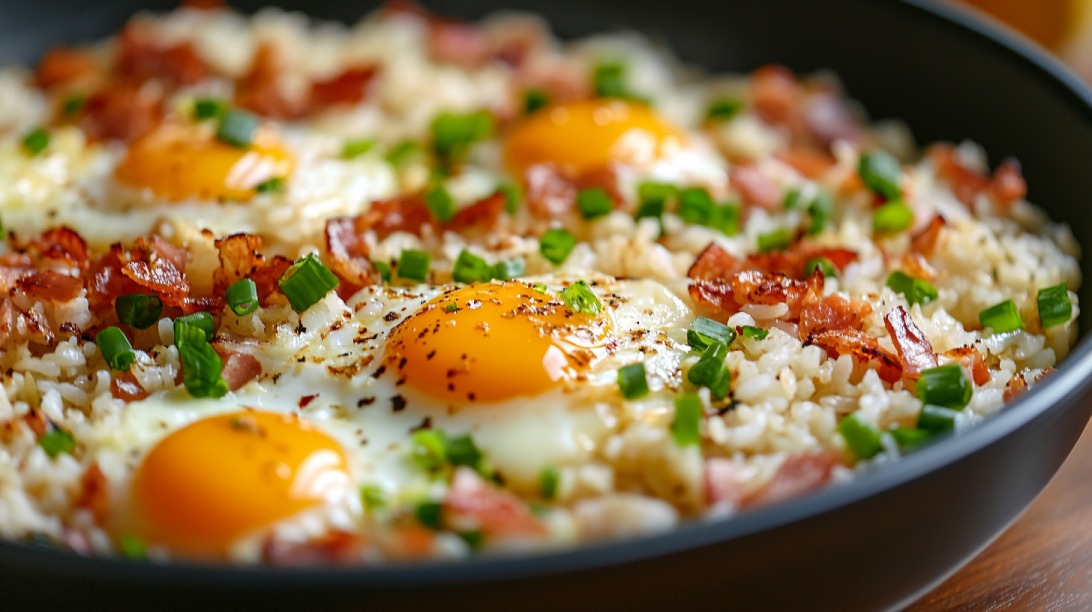
Quick, flavorful, and satisfying—this Egg Fried Rice is the ultimate go-to for busy weeknights or a tasty lunch. Made with fluffy rice, scrambled eggs, and savory aromatics, it’s a classic dish that’s easy to whip up in under 20 minutes.
Whether served as a main course or a side dish, this versatile recipe is a crowd-pleaser and a great way to use up leftover rice.
- 2 cups cooked rice (preferably day-old)
- 2 tablespoons vegetable oil or sesame oil
- 2 large eggs, beaten
- 2 cloves garlic, minced
- ½ cup chopped green onions
- 1 cup mixed vegetables (e.g., peas, carrots, corn – fresh or frozen)
- 2–3 tablespoons soy sauce (to taste)
- Salt and pepper, to taste
- Optional: a dash of sesame oil or chili sauce for garnish
Instructions:
- Heat one tablespoon of oil in a large skillet or wok over medium-high heat.
- Add the beaten eggs and scramble until just set. Transfer the mixture to a plate and set it aside.
- In the same skillet, add the remaining oil. Sauté the garlic and white parts of the green onions for 1 minute until fragrant.
- Add the mixed vegetables and cook for 2–3 minutes until tender.
- Add the cooked rice, breaking up any clumps as you go. Stir-fry for 2–3 minutes until the rice is heated through.
- Return the scrambled eggs to the pan and stir to combine.
- Add soy sauce and season with salt and pepper to taste. Mix well and cook for another minute.
- Remove from heat, garnish with the green parts of the green onions, and add a drizzle of sesame oil or chili sauce, if desired. Serve hot.
| Egg Fried Rice Recipe Details | |
|---|---|
| Preparation Time | 5 minutes |
| Cooking Time | 10 minutes |
| Total Time | 15 minutes |
| Serving Size | 2 servings |
| Yield | 1 skillet of fried rice |
| Cuisine | Asian / Chinese-Inspired |
| Course | Main Course / Side Dish |
| Nutrition Information (per serving) | |
| Calories | 390 |
| Fat | 14g |
| Carbohydrates | 50g |
| Protein | 11g |
- Use cold, day-old rice for the best texture. Freshly cooked rice can become mushy.
- Customize by adding cooked chicken, shrimp, or tofu.
- For added flavor, try adding a splash of oyster sauce or sprinkling with white pepper.
Each dish meets three needs. It warms the body. It takes little effort. It gives back control.
Homemade Meals for Emotional Support
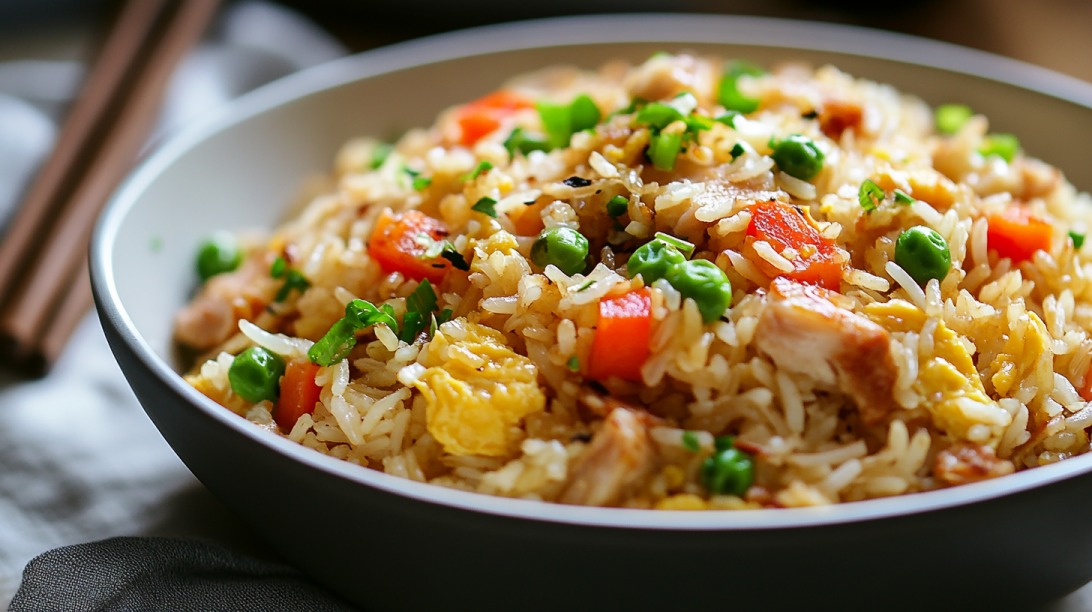
On days when emotions run high, my answer is soup. It needs no rush. The scent fills the space. That helps me slow down.
Emotional support does not always come from people. A bowl of food can hold the same weight. Cooking keeps my hands moving when the mind stalls.
Best meals for emotional rescue:
| Meal Name | Cook Time | Tools Needed | Comfort Rating (1–10) |
| Chicken Rice Soup | 30 min | Pot, knife, spoon | 10 |
| Oatmeal Banana Bowl | 10 min | Pan, fork | 9 |
| Lentil Soup | 40 min | Pot, ladle | 10 |
| Mac and Cheese | 25 min | Oven dish, whisk | 9 |
| Tomato Rice | 30 min | Pot, spatula | 8 |
“Food and emotion share a direct path in the brain. That is why warm meals feel like safety.” – Dr. Rena Patel, Clinical Psychologist, 2024
“Cooking offers focus and reward. It trains the mind to rest between steps.” – Chef Lamont Pierce, Culinary Therapist, 2025
FAQs
Related Posts:
- How to Cook with Ghee – Flavor Pairings, Tips & Storage
- How to Cook Denver Steak: Step-by-Step Guide to a…
- 10 High-Protein Recipes Perfect for Weekly Meal Prep
- Quick and Healthy - 3-Ingredient Banana Recipes for…
- 12 Best Steak Recipes Around the World You Must Try in 2025
- 10 Memoirs with Recipes to Bring the Stories to Life
